You have created a word document and want to share it with your target audience. It could be to share:
1. Class notes or assignments with your students
2. Company reports with your colleagues
3. A presentation with attendees at an event
4. Product information such as ingredients and recipe with the buyers
5. User manuals on how to use or assemble a product
Or it can be any such use case. And you’re thinking how to share the document with your audience.
One way to do it is by sending them a soft copy of the document via email. But for that, you’d need the email addresses of all your recipients. And it’s not always possible to have them handy.
Even if you have the emails, it’s still a tedious process to send them the soft copies one-by-one.
So rather than sending them the document, help them access it by themselves. How? Via print media.
And a simple addition to the print media creatives can make it readily actionable for the audience. Yes, we are talking about QR Code for a word document.
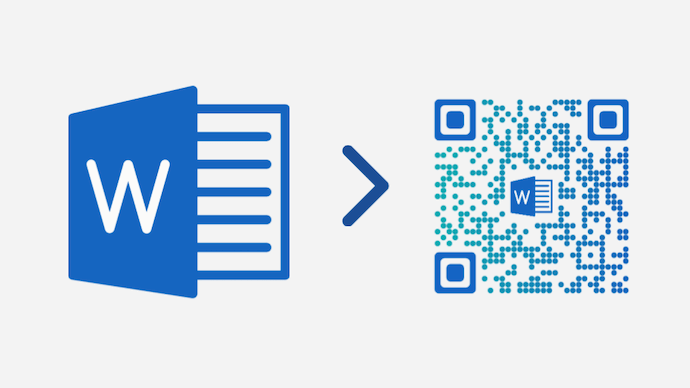
You probably know that QR Codes are 2D barcodes that store alphanumeric information. And they are also called advanced level barcodes. Why?
Because just like barcodes, they help you store information. But unlike barcodes, they don’t store limited information. They go a step ahead with a storage capacity of up to 7,089 characters. And besides text-based content, they also help you share multimedia such as images and videos.
Related: Types of QR Codes
A. How to create QR Code for a word document
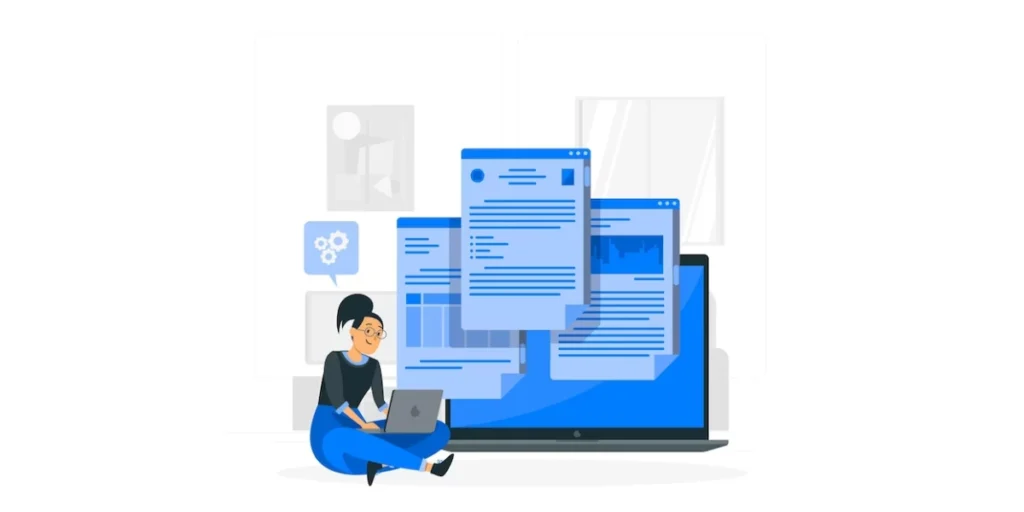
Now the question is—how do I create a QR Code for a word document? Well, obviously, you’ll first need a QR Code generator to do that. But how do you find the best-suited one for your use case?
If you do a quick Google search, you will end up with multiple options. How would you then decide the best one for your use case? The answer is simple—by comparing them. But will you visit each one of them to do this?
Don’t worry. You don’t really need to do that. Here’s a detailed comparison chart of the top QR Code generators online. You can go through it to decide on the one that suits your needs.
Once you decide on a QR Code generator, the next step is—to create QR Code for a word document. And you can do it in four different ways:
1. Upload document to cloud server and create a URL QR Code
Sounds easy, right? As users scan this QR Code, they will be able to download the QR Code on their phones. However, depending on the mobile browser, it may or may not be possible to open the document just for viewing.
Here’s how you can create QR Code with a word document:
a. First, create a word document with all the details you want to share and finalize it (in .doc or .docx format)
b. Next, upload this document to a cloud storage site such as Dropbox, Google Drive, Amazon S3, or OneDrive
c. Once you upload it, copy the shareable link to this file. Also, make sure that the document access permissions are set to ‘Public’. This will ensure that anyone with the QR Code can view and download the document
d. Now, head on to your QR Code generator and create a Website URL QR Code
Wondering—how to create one? Simply select the Website URL QR Code category and paste the public shareable link to the file. Next, proceed ahead to design the QR Code (optional) and download it. That simple!
Here is a detailed guide on how you can convert a website link into an actionable QR Code.
2. Create a Google Doc and generate a URL QR Code
Say you have not created a word doc yet. Here, you can skip doing it to directly create the document in Google Docs. What will that do?
Well, it will do away with the need of uploading the document to a cloud storage service.
Once you add the required details to Google Doc, you can directly copy the ‘public’ shareable link to it.
And once you get the link, you can create a Website URL QR Code, just like that mentioned in step one.
3. Convert the document to PDF and create a PDF QR Code
This is yet another way to do the job. In this method, the user will be able to scan the QR Code for a word document and view or download a PDF version of the Word document.
Here is what you need to do:
a. Create and finalize the Word document (in .doc or .docx format)
b. Once you add all the details or data, export the Word document as a PDF file
c. Go to your QR Code generator and select the PDF QR Code category.
Next, upload the PDF file to be encoded in the QR Code and create the QR Code. Further, you can proceed ahead to design the QR Code. And finally, download it in the desired image format (such as PNG, JPG, and SVG) and size.
Here is a detailed guide on how to create a PDF QR Code.
In fact, just like a word document, it is also possible to convert a powerpoint presentation into a QR Code.
4. Create a Rich Text QR Code
Wondering what a Rich Text QR Code is? When scanned, it shows the encoded content to your end-users. And you can format this text as you like.
That means—no need to create a word document, a Google Doc, or even a PDF. You can add all this information to the QR Code directly. And we call it—a Custom Page QR Code .
This method gives you full control of the document content. And also provides a great user experience.
As users scan this QR Code for a word document, a mobile-optimized page opens on their phone’s browser. It contains all the content that you want to share with the end-users such as titles, text, and images.
How to create a Custom Page QR Code
Using Scanova QR Code generator for a demo, here’s a detailed step-by-step guide on how to create one:
a. Go to Scanova QR Code Generator
b. From QR Code categories, select Custom Page QR Code
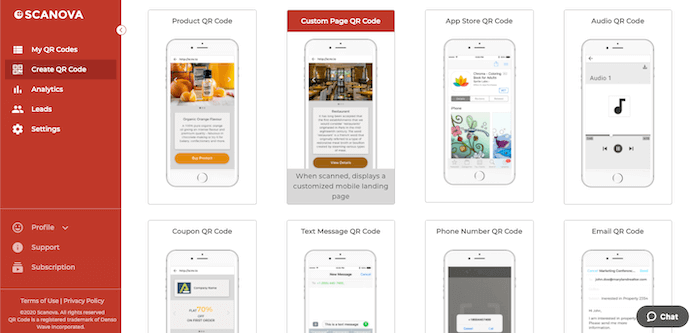
c. Enter the content you want to encode in the QR Code. You can even format it as you want and add up to 10 description boxes and buttons.
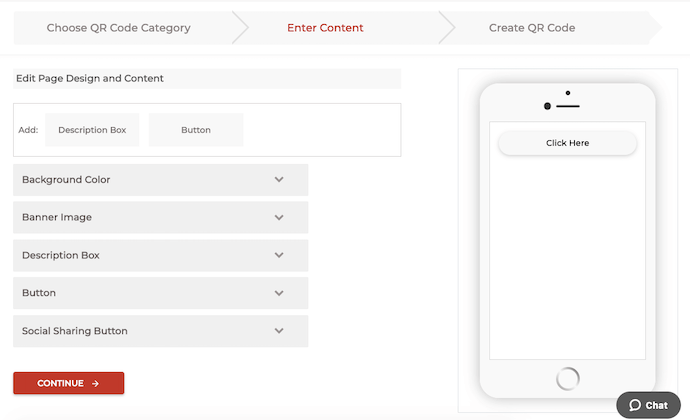
d. You can now name your QR Code and add tags. With tags, you can find your respective QR Code on your dashboard. Once you’ve added all the details, click Create QR Code.
e. Two QR Code designs will appear on your screen. You can select either of them.
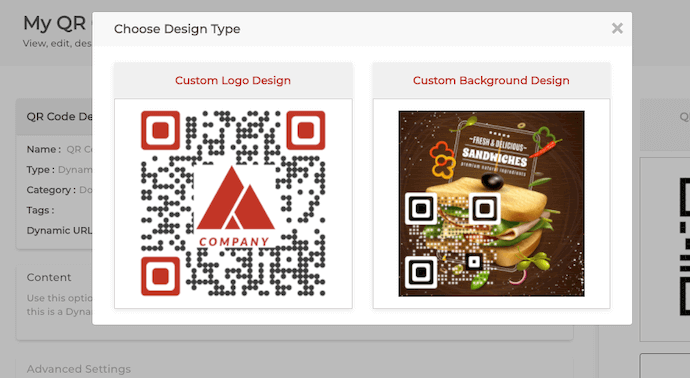
Note that if your use case is promotional, you must consider adding design to your QR Code. Why? Because a customized QR Code acts as a point-of engagement. Hence, it attracts more scans than a black-and-white one.
f. Once you click on Download, you will be prompted to create an account. you can now Sign Up and start with your 14 day free trial.
g. Finish up Sign Up to download your QR Code. Once you finish, you will prompted to specify QR Code image size and format. Once done, click on Export.
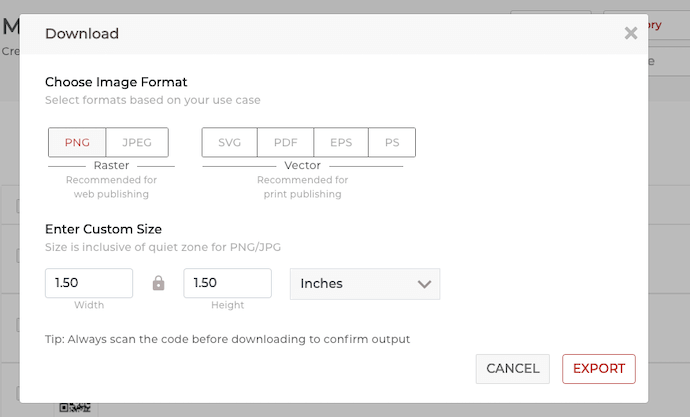
That’s it. Your QR Code will be created.
Related : QR Code For Link
How to edit Rich Text QR Code
You can edit the information encoded in a Rich Text QR Code anytime you want. Yet your QR Code will remain the same. This is because it is dynamic in nature.
Dynamic QR Codes allow you to edit the data even after being created. The QR Code remains the same, and hence you do not need to reprint it.
Here’s how you can edit your QR Code:
1. Login to your Scanova account and go to My QR Codes.
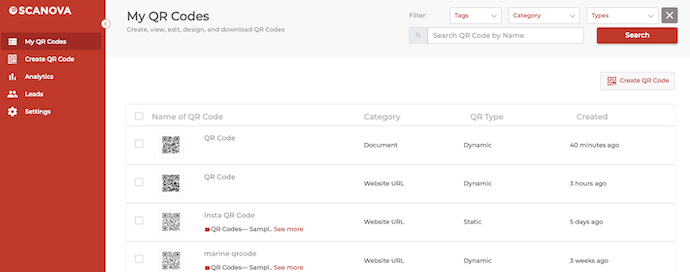
2. Select the QR Code you want to edit
3. Here you can edit the following things:
Content: You can edit the PDFs you linked to a QR Code
Advance Settings: You can enable password protection, GPS location, and lead generation
Design: You can edit the design again the way you want to
4. Click Update QR Code
Your QR Code will be updated and at the same time, will remain the same. No need to reprint it.
Being dynamic in nature, it even allows you to track how many people are scanning this QR Code and from where.
B. Best practices: QR Code for a word document
Creating a QR Code for a Word document can be a helpful way to quickly share the document with others, especially in situations where the document needs to be accessed digitally or from a mobile device.
Here are some best practices to follow when creating a QR Code for a Word document:
1. Choose a reliable QR Code generator
There are several online QR Code generators available, but it’s important to choose a reliable one that offers customization options and allows you to create high-quality QR Codes for a word document.
2. Use a URL shortener for long URLs
If the QR Code for a word document is hosted online, consider using a URL shortener like Bitly or TinyURL to shorten the document URL before generating the QR Code. This can make the QR Code for a word document less complex and easier to scan.
3. Test the QR Code
Before sharing the QR Code for a word document, make sure to test it using multiple QR Code scanning apps to ensure that it properly redirects to the intended document. This will help avoid any potential issues when others try to access the document.
4. Provide context for the QR Code
When sharing the QR Code for a word document, provide some context or instructions for how recipients should use it. For example, you can include a brief description of the document and explain how to scan the QR Code using a smartphone or other compatible device.
5. Consider QR Code placement
If you’re planning to print the QR Code for a word document, consider the placement carefully to ensure that it’s easily scannable. Avoid placing the QR Code for a word document in areas that may be obstructed or difficult to reach.
6. Ensure document accessibility
Make sure that the QR Code for a word document is accessible and compatible with different devices and software. Consider using widely accepted document formats like PDF to ensure that recipients can easily view the document regardless of their device or operating system.
7. Monitor usage and engagement
If possible, use a QR Code generator that provides analytics or tracking capabilities. This will allow you to monitor the usage and engagement with the QR Code for a word document, providing valuable insights into how many people have accessed the document and when.
C. FAQs: QR Code for a word document
1. What is a QR Code?
A QR (Quick Response) Code is a type of matrix barcode that can be scanned using a smartphone or other devices equipped with QR Code scanning capabilities. When scanned, it can direct users to a specific webpage, document, or other digital content.
2. How do I create a QR Code for a Word document?
You can create a QR Code for a Word document using Scanova.
3. Can I customize the design of the QR Code?
Yes, Scanova allows for customization of the QR Code’s design, such as changing the colors and adding a logo or image. However, it’s important to ensure that the customization does not compromise the QR Code’s scannability.
4. How can I test if the QR Code works correctly?
You can test the QR Code by scanning it with a QR Code scanning app on your smartphone. Make sure the QR Code redirects to the correct Word document. It’s also advisable to test the QR Code on multiple devices to ensure compatibility.
5. Can a QR Code for a word document be printed?
Yes, a QR Code for a Word document can be printed on various materials, including paper, flyers, posters, and business cards. However, ensure that the QR Code is placed in a location where it can be easily scanned without any obstructions.
6. Is it possible to track the usage of the QR Code?
Scanova provides analytics and tracking features that allow you to monitor the usage of the QR Code, such as the number of scans, the location of scans, and the devices used. This data can provide valuable insights into the engagement with the Word document.
7. Can I use QR Codes for offline word documents?
QR Codes can be used for offline Word documents by linking to online versions, such as cloud storage links or webpages where the document can be downloaded. Ensure that the link remains active and accessible for users who scan the QR Code.
8. Are there any security considerations when using QR Codes for word documents?
When sharing sensitive or confidential information through QR Codes, it’s essential to ensure that the document’s access is restricted to authorized users. Additionally, consider using secure file-sharing methods and encryption for sensitive documents.
Summing Up
That’s all you need to know about QR Code for a word document. Finalize on either of the four ways mentioned above, create your QR Code for a word document, and add it to your print media material.
It will not only help you share the files easily but will also be easy-to-access for your audience. They only need an internet-connected smartphone to scan the QR Code and access the encoded content. That simple.
Still have any doubts or queries regarding QR Code for a word document? Let us know in the comments.
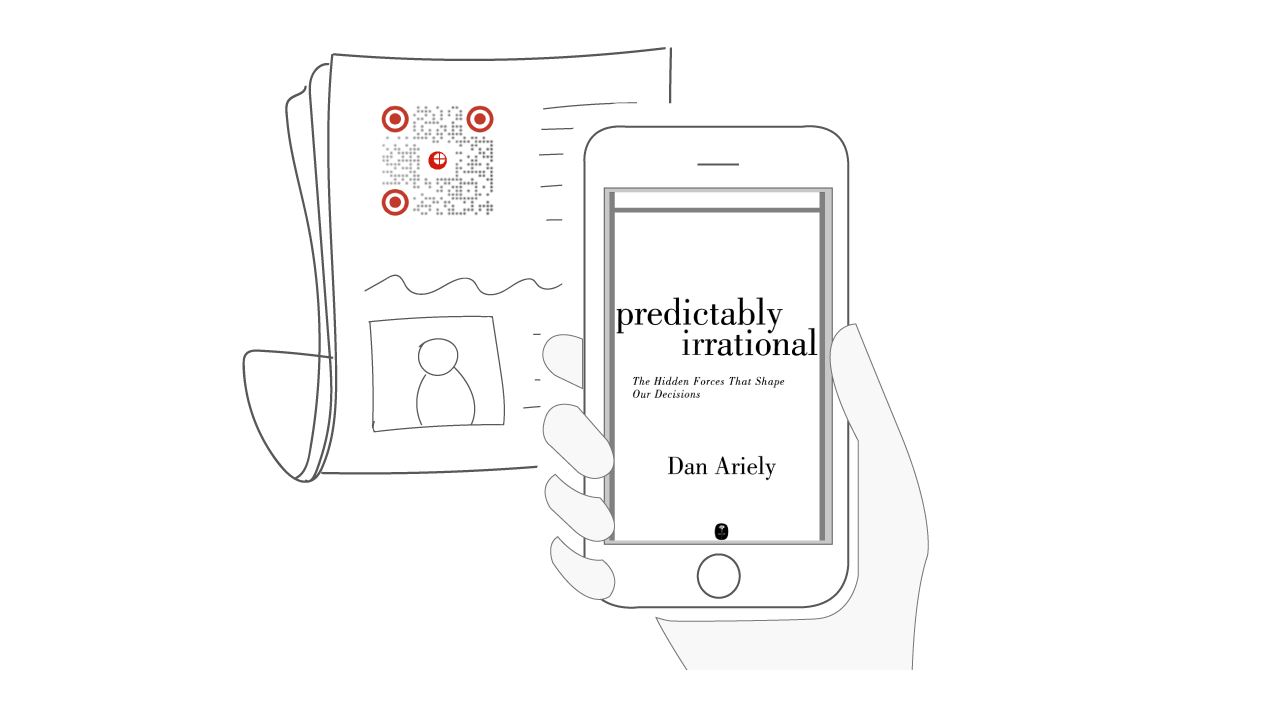
i want an automated bar code field in word document.
Hey Sada,
Can you furnish more details about your use case?
Your talent is amazing! I am constantly amazed of your one-of-a-kind perspective on life.